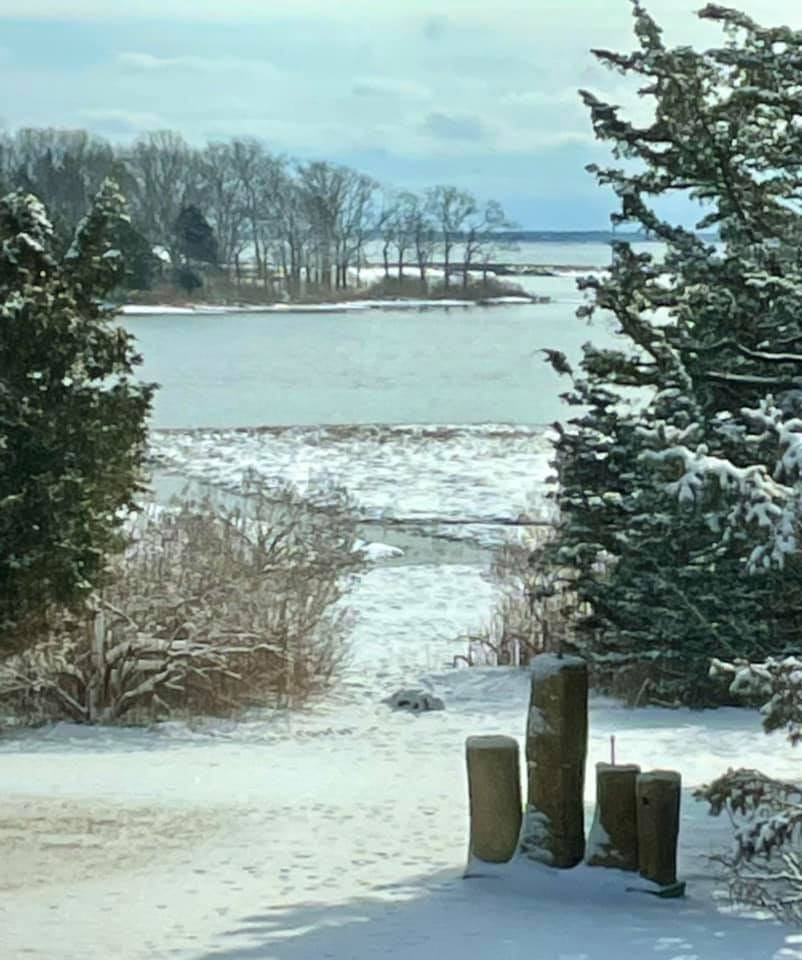I thought some of my new readers and subscribers might like to see what’s been going on with my column over the years, so I am reprinting this from the first month I started my Substack. I hope you enjoy reading it as much as I enjoyed writing it.
The winter light at dawn on the East End of Long Island is so soft you have to check the time to make sure it’s not just starlight on a clear night. The light interrupts the darkness of the sleeping loft so quietly it’s almost not there, but then it creeps across the bottom of the bed until it reaches your eyes and on some mornings there’s just enough to wake you.
Outside the window the light has already illuminated the salt marsh and the bay beyond. There’s not enough light to make the water sparkle but it’s there, as gray as the dawn. We live on Accabonac Harbor, about a mile down the road from where Jackson Pollock and Lee Krasner settled in 1945 when Peggy Guggenheim loaned them the down payment on their house at 830 Springs Fireplace Road, so the body of water we look out on every morning is the same one they saw every day.
It is said they moved out here from the city for the light, and if you live here, there is no doubt that is true. The light in winter out here is a slate gray you can almost feel with your fingers. At dawn it has a carbon steel quality. It’s odd to think that there was light just like this when Pollock and Krasner looked out across the harbor -- the light changes day by day and hour by hour, but it’s always in one way another the same over the months and years.
People reach for words to describe why the light out here is so attractive to artists. It’s flat, or it’s neutral, or it’s even, or they describe how kind it is to colors on the canvas, that it doesn’t distort the colors. But I think it’s because the light doesn’t seem to have a source. It’s not from overhead, out of the sun or the sky. East End light just is. It’s a presence. It doesn’t illuminate as much as get out of the way. It lets paint prevail. It lends the artist freedom, which is what all art demands in the end. Freedom to be, for the artists who make art, freedom even for the people who will eventually gaze upon it.
Living with the light out here feels different from anywhere else. I’ve lived in high mountain light in New Mexico and Colorado, in air so clear you can see the gravel at the bottom of your soul. I’ve lived in the light of big cities like New York and L.A., as flashy and scattered as the anxious creatures who occupy their shattered landscapes. There is deep light and tall light and bright light and soft light, but none of it is like the light out here.
It helps that I live with the artist Tracy Harris, because I am allowed daily to see the world the way she sees it, through the eyes of a painter. I’ve learned to see that we aren’t surrounded by scenes or vistas or things as much as we are by colors. That’s what I see around me in the artist’s loft where we live: colors in tubes and cans and jars and little aluminum plates she uses as palettes, colors on the canvases of finished and unfinished paintings, colors in the jumble of brushes and knives and pens and chalks and pencils and squirt bottles and rags and paint splattered easels and aprons, even colors in discarded bits of paper towel and squeezed out tubes and smears of paint on scraps of wood.
The area of the loft in which she works would look like a big mess if it weren’t for the light in her eyes. It’s artist’s light, the light of creativity and freedom. And just think: tomorrow there will be another dawn, more of the light that’s always changing but forever the same, the light we inhabit and make between us, love light.




OK, I can tell right now that this is going to be the calming balm we need, Lucian. Now I'll sit back and enjoy. Have a great evening.
So light is one of the sweetest aesthetics of this wide world.
Your description is amazing to hear and to see.
I appreciate this beauty that you elect to share .
Tracey Harris’ work is exquisite as well.
Thank you